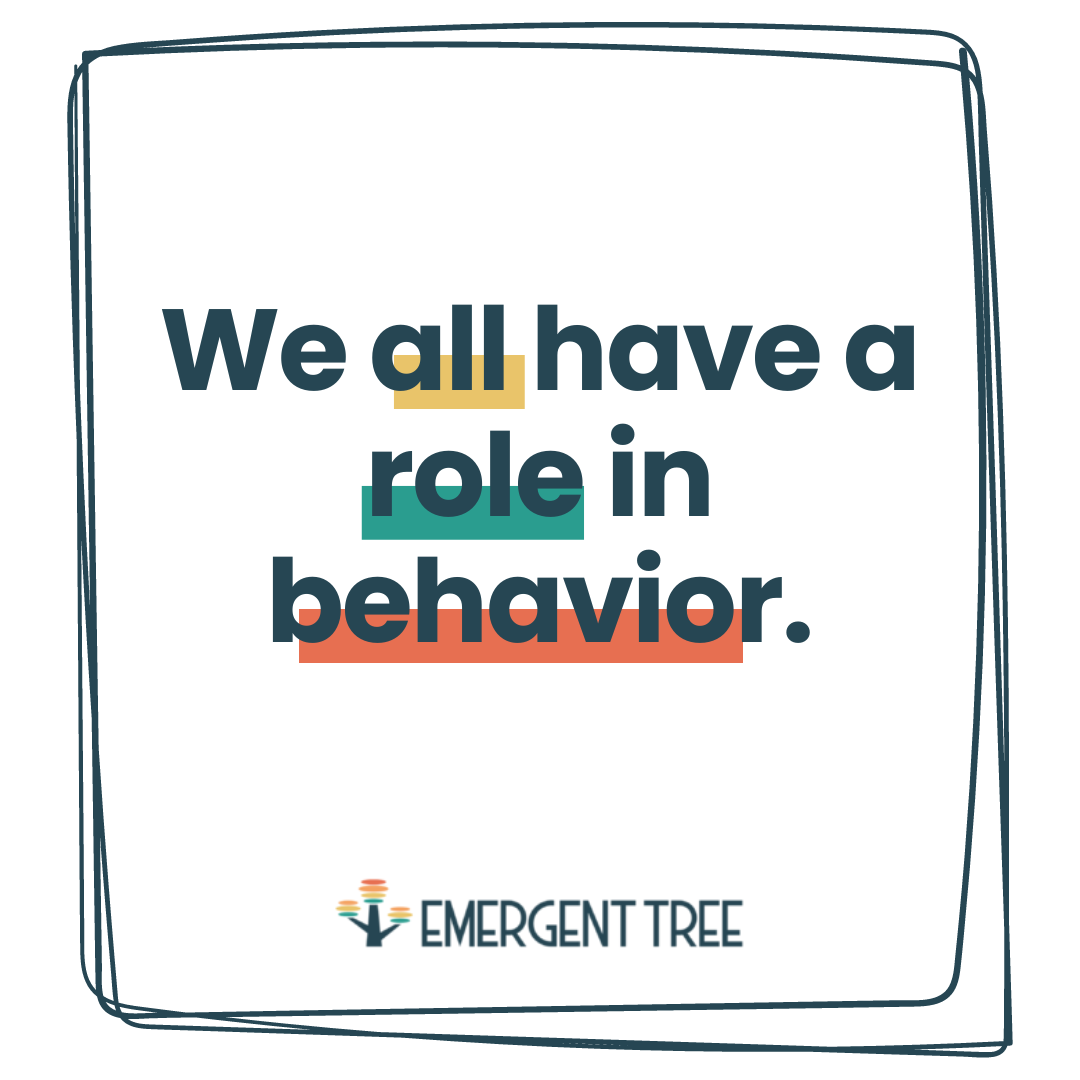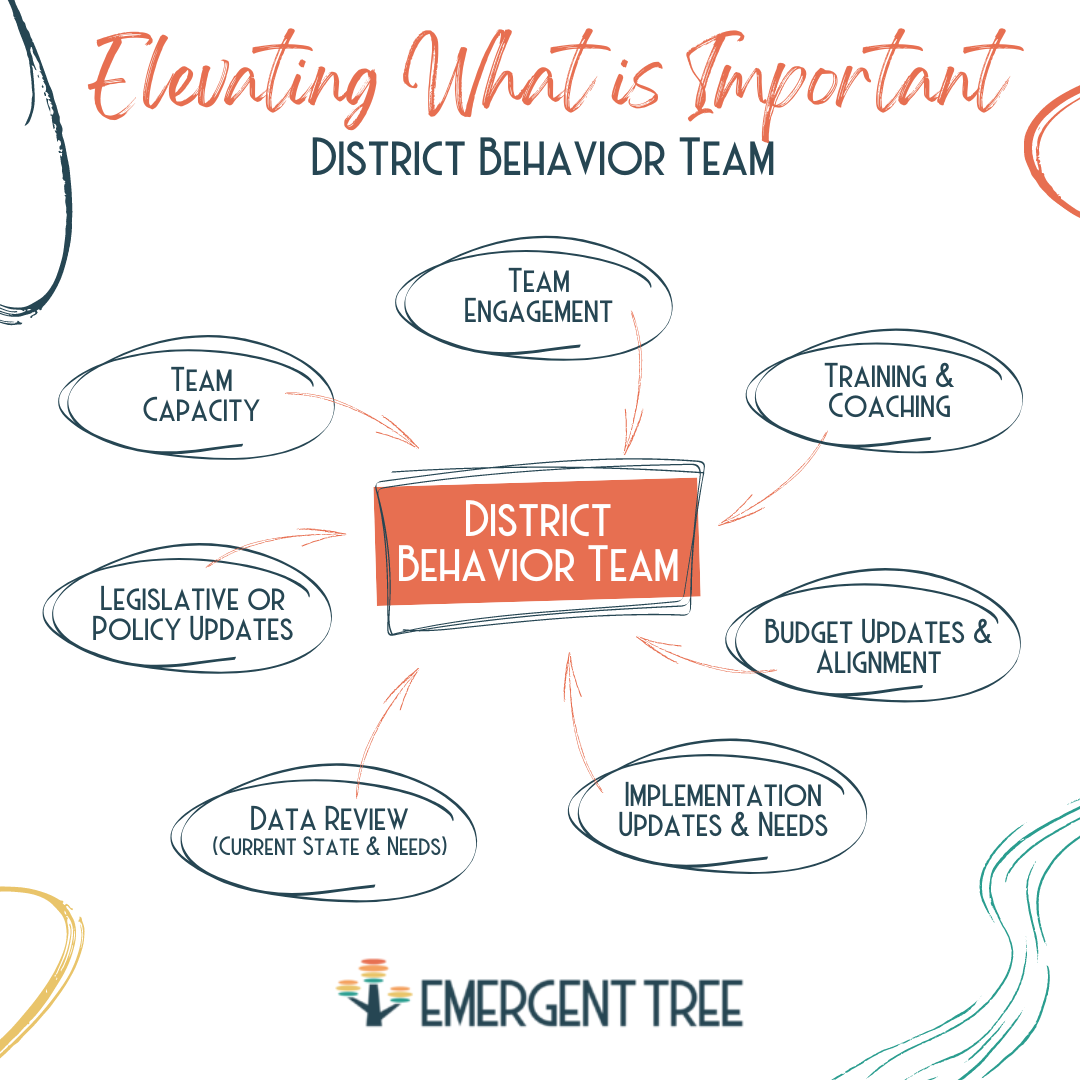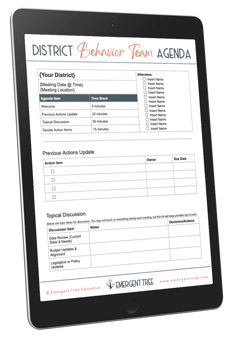Bringing Alignment Through District Behavior Teams
As educators, each day is filled with sparks of learning, and those moments when you see the growth in your students are something special. We capture those moments that help us keep running through each day, week, month, semester… It often can be hard to crawl out of the details and motions of each day, though. We get stuck in the weeds of checking off all the day's boxes. We work to put a framework in place to support our students in a rhythm and path to growth, but do we have one for ourselves? Do we have support for ourselves that can spark learning and moments of growth in our lives?
Putting together a support system for your MTSS-B journey on both your campuses and across the district will drive unity and support for everyone on your team. Whether you are starting to implement a new MTSS-B Framework across your district or you are working to enhance your current program, it’s critical that you have a team that is soaring above the weeds, aligning resources, developing common understanding, and evaluating needs. Do you have a District Behavior Team to support your efforts? Let’s dig in and see what a team like this might look like to support your campuses.
How does a District Behavior Team work?
A District Behavior Team is a mix of stakeholders across the whole district, bringing key roles together that serve our campuses in a variety of ways. Identifying department leaders from teams like Counseling, Social Emotional Learning (SEL), Special Education, Student Services, Safety & Security, Mental Health, Campus Leader Supervisors, Campus Leaders, and Executive Leadership is key. The District Behavior Team is not a separate department or just Behavior Specialists.
The team's goal is to help coordinate the implementation of and sustain the efforts for MTSS-B across the district. They are focused on:
- Aligning Resources
- Ensuring Efficiency
- Developing Common Understanding
- Evaluating Current Successes and Needs
- Effectively Monitoring and Responding to Legislative or Policy Changes
Having representation from across departments and campuses allow us to spread alignment across and combine efforts to ensure clarity and ease of implementation for campus-based staff. It brings people who may not normally interact with each other regularly, but have the collective responsibility to support student behavior, into one room to collaborate. We’ve found that breaking out of silos can drive momentum for our campuses as it sparks ideas and learning for us. Our learning and growth as educators are a key to quality education for students. A District Behavior Team can help build a support system that keeps us all flowing in a unified direction and equipped with the resources we need for success.

We all have a role in behavior.
Regardless of our campus roles, we connect with our students in different ways and see their needs differently.
What are some best practices for building a District Behavior Team?
Establish roles and responsibilities.
Who leads the team? The leader of the team stays focused on the purpose and ensures the work continues from year to year. Without an established leader, the team often defaults to the highest-level team member, though this person may not be the best suited to guide the work.
Who runs the meeting and sets the agenda? It’s recommended to establish a co-leader for the team, allowing for shared responsibilities in setting the pace and priorities for the meeting and facilitating the conversation.
How many people should be on the team? A typical team has 10-15 people, though this number often varies depending on the district's size. Team membership should be large enough to allow many perspectives and voices to be heard, yet small enough that meaningful decisions can be made to move the work forward.
Who does what, and how do we get it all done? It is common for subcommittees to be formed outside the team to focus on a specific project or initiative. These committees report back to the overall team each time they meet.
Build an agenda.
What should an agenda’s structure look like?
- Keep progress moving from previous meetings with updates from projects/initiatives.
- Look at data to identify current state and needs (and celebrate growth!).
- Discuss any new initiatives, legislative or policy updates, and budget changes impacting the work happening.
- Set actions due for the next meeting.
How should the agenda be built? Put together your agenda before the meeting and send it out in advance so everyone has a clear line of sight for what you will set to accomplish. This will focus the team on what is most important to cover.
Elevate what is important.
Part of setting an agenda is to help keep top of mind and elevate what is most important for the team to discuss. Some suggested topics for the team are:
- Data Review (Current State & Needs)
- Budget Updates & Alignment
- Legislative or Policy Updates
- Team Capacity & Engagement
- Training & Coaching
- Implementation Updates & Needs

Set a consistent schedule.
How often should you meet? It is recommended that a District Behavior Team meets at least once per quarter. With many people spread across departments, schedules can be complex to balance, so a monthly rhythm may not be feasible, but try to set at least a quarterly pace.
How long should the meetings be? Ninety minutes is a good pace for your meetings, as you want to have some solid discussion and update time without letting it become a multi-hour event.
Regardless of your role on the team, it’s crucial for you to use your voice.
If you were selected to join the team, you are there to provide your unique perspective to the group. The wide breadth of roles on this team is intended to help feed information and ideas from all avenues so everyone is staying informed and equipped. Dig in and look for opportunities to inspire your co-educators as you all seek to drive growth and impact across your district.

Ready to get going on setting the pace and structure for your District Behavior Team?
Download this District Behavior Team Agenda Template to help guide you with key topics to discuss and a format to get you going!
Access these great on-demand webinars for even more resources:



Comments